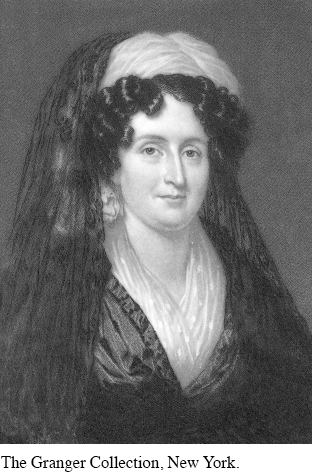The American Promise: Printed Page 274
EXPERIENCING THE AMERICAN PROMISE
The American Promise: Printed Page 274
Page 274One Woman’s Quest to Provide Higher Education for Women
Talented young men seeking the mental enrichment and career boost of higher education saw their opportunities expand rapidly in the early Republic. By 1830, six dozen colleges offered training in science, history, religion, literature, and philosophy. Not a single one admitted females.
With the spread of district schools and female academies, however, the number of girls trained for advanced study was on the rise. The winning rationale for female education—
The academic aspirations of Emma Hart—
Emma ran the academy for two years until she married a Middlebury physician and banker named John Willard in 1809. Marriage for white women usually ended outside employment, so Emma’s life now focused on child care and domestic duties. Yet she found time to read books in her husband’s well-
Four years into their marriage, John Willard suffered severe financial losses, leading Emma Willard to open an advanced girls’ school in her home. She patterned her courses on those at nearby Middlebury College for men, and her rigorous curriculum soon drew students from all over the Northeast. One satisfied father with political connections persuaded the Willards to relocate to his home state of New York with the promise to help them secure state funding for a school.
Emma drew up a formal proposal in 1819, arguing that advanced female education would both enhance motherhood and supply excellent teachers needed for a projected state-

Willard invited the public to weeklong examinations, where students solved algebra problems and geometry proofs on chalkboards and gave twenty-
More than the rigorous curriculum inspired these young women. Willard was an exemplary role model, beloved by many of her students for her dedication and confidence. One student recalled that her “great distinction seemed to me to be a supreme confidence in herself and, as a consequence, a stubborn faith in the capacity of her own sex.” Willard graciously gave much of the credit to her unusually supportive husband: “He entered into the full spirit of my views, with a disinterested zeal for the sex whom, as he had come to believe, his own had unjustly neglected.”
The Troy Female Seminary flourished; it still exists today as the Emma Willard School. From 1821 to 1871, more than 12,000 girls attended; it was larger than most men’s colleges. Ministers’ daughters received a discount on tuition, and many girls were allowed to defer payment until they were wage-
Questions for Analysis
Summarize the Argument: How did Emma Willard’s own life demonstrate the importance of female education for a family’s financial security? For a woman’s personal sense of competence and independence?
Consider the Context: What factors, large and small, help explain the growth of women’s education during the early decades of the nineteenth century?
Ask Historical Questions: What difference might it make for large numbers of females to attain literacy over the course of the first decades of the early Republic?